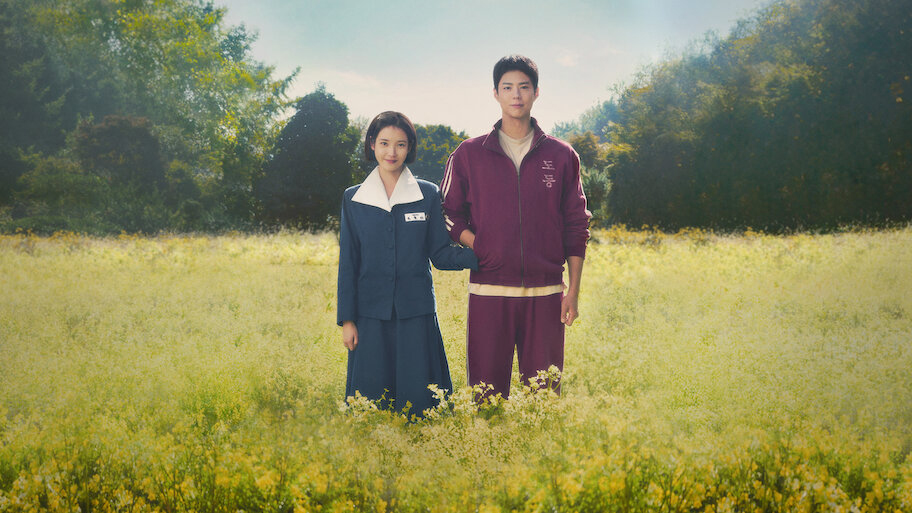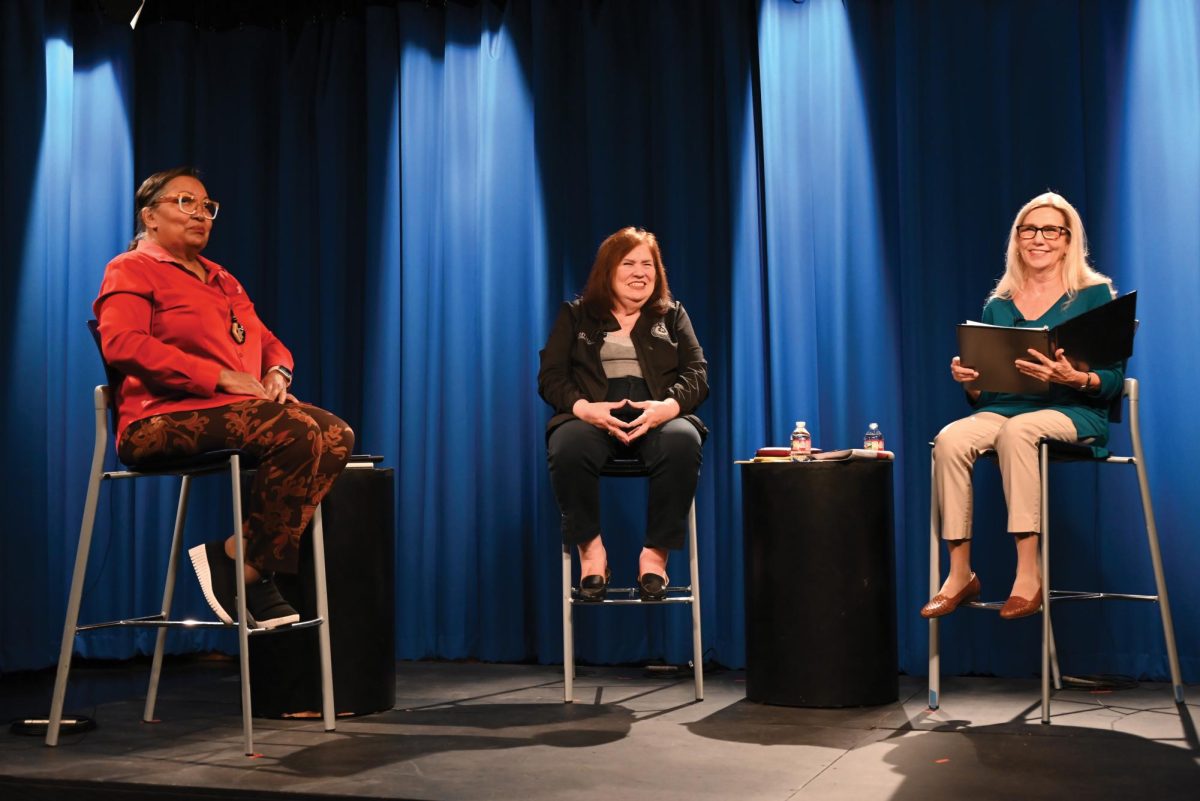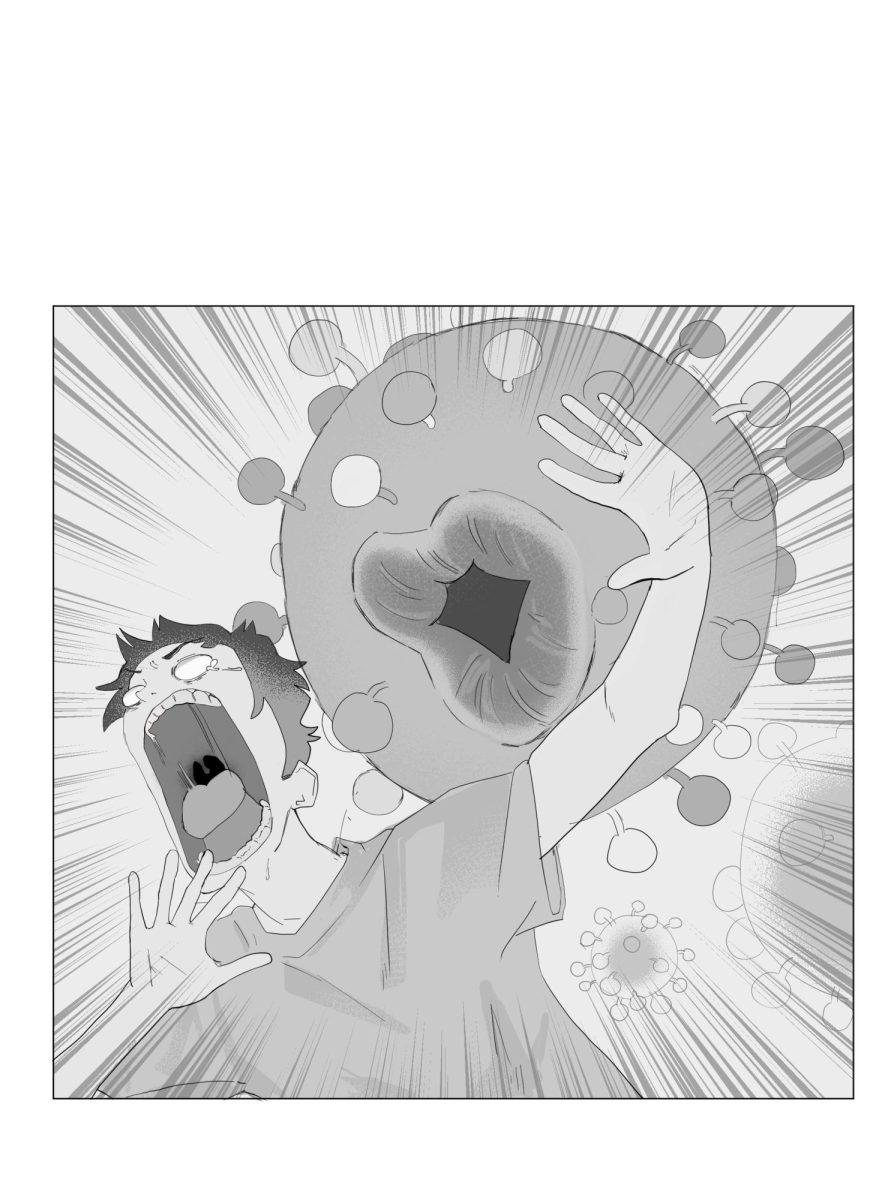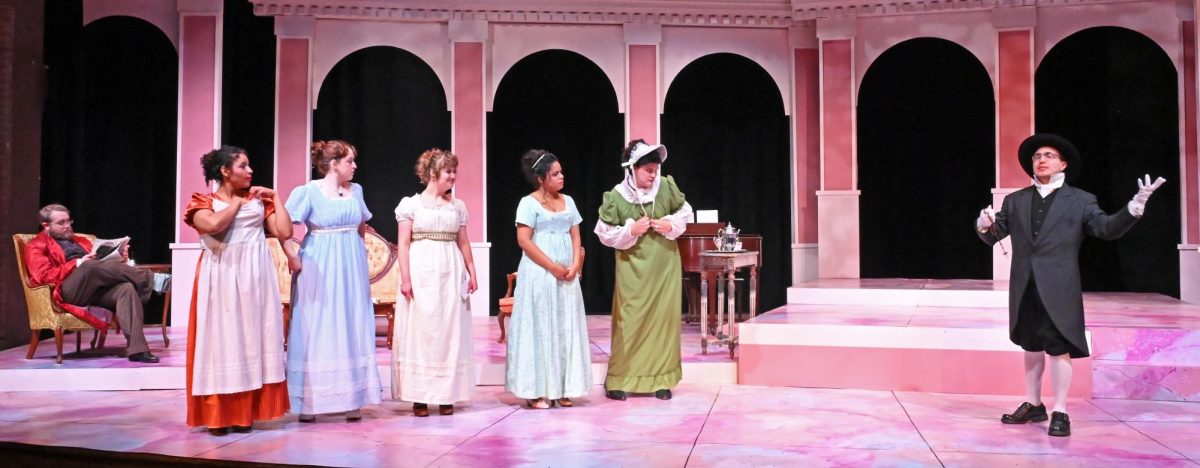A classic novel in origin, “Pride and Prejudice” follows the story of the Bennet family of four daughters (originally five in the novel) and their parents in the early 1800s England. “Pride and Prejudice” graces the Dallas College/North Lake Campus stage as the spring semester production by the North Lake Drama Department.
The Bennet daughters go through the trials of courtship and tribulations of financial security all rolled up in one contract marriage. All of this is further complicated by the biases and assumptions (some may call pride and prejudices) that each character holds and acts upon in relation to each other.
While my favorite story by author Jane Austen is probably “Emma,” I grew up with “Pride and Prejudice.” Reading the novel in high school, and my parents having the film “Pride and Prejudice” (1995) on DVD, the story beats are wildly familiar. Here I hope to shine a light on this company’s take on it.
The world of “Pride and Prejudice” is presented as bright and rosy with the floor and staging set in shades of pink. This happy environment is further emphasized by the cast primarily dressed in pastels and with an achromatic set. The more outspoken or transgressive characters wear more saturated colors with Mrs. Bennet dressed in deep orange and Mr. Wickham wearing a bright red military coat.
The set design was sparse but well made. It fell in line with the story, which was set in a provincial but well-off English community of the early 1800s.
Presented as a comedy of errors, the play is a condensed version of the original text and made more accessible in its language and context in the way it employs exposition and language. While all the actors held their own, Miss Bingley and Lady de Bough, both played by actress Zini Canes, was a standout.
Leaning into the humor while still moving with the language in a way that brought out the wry wordplay organically made this production shine.
It’s an old story, making it difficult to tell again, even more so as the years go on. However, the care put into the work, the life that is breathed into it with each new production and the willingness from all involved to engage with the story in real time is what keeps it worthwhile.
To quote a phrase from William Shakespeare, “The plays the thing!”
















